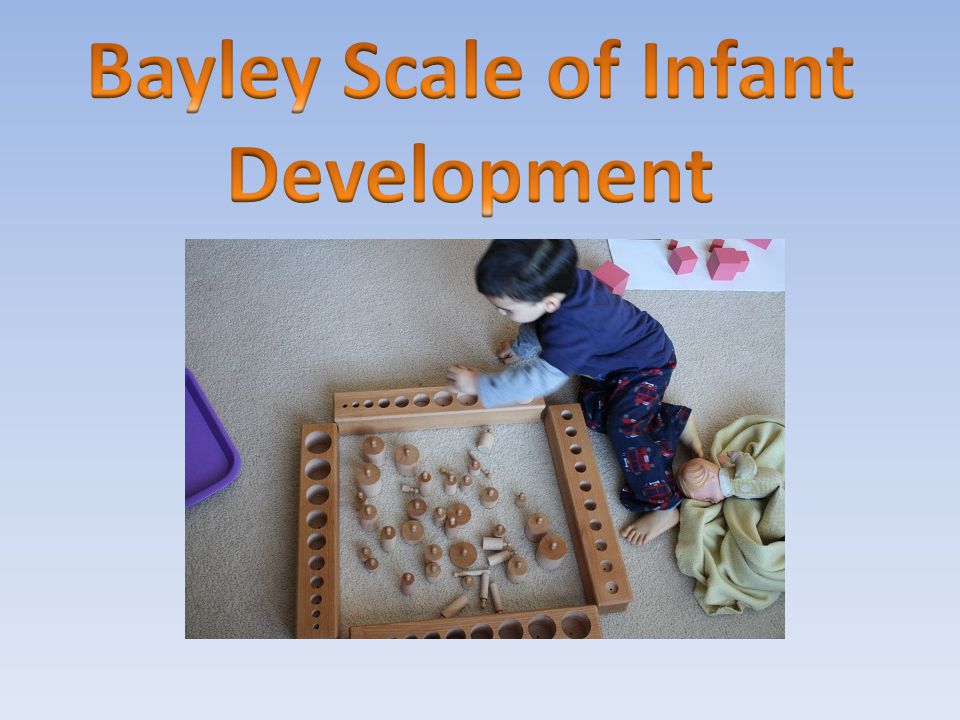The Bayley Scales of Infant and Toddler Development (Bayley-III is the current version) is a standard series of measurements originally developed by psychologist Nancy Bayley used primarily to assess the development of infants and toddlers, ages 1–42 months.This measure consists of a series of developmental play tasks and takes between 45 – 60 minutes to administer and derives a developmental quotient (DQ) rather than an intelligence quotient (IQ).
Raw scores of successfully completed items are converted to scale scores and to composite scores. These scores are used to determine the child’s performance compared with norms taken from typically developing children of their age (in months).


